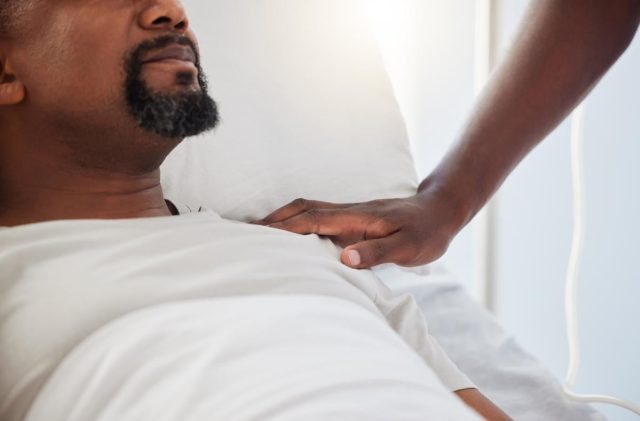For AML and MDS, lower utilization seen for non-Hispanic Black patients compared with other groups
By Elana Gotkine HealthDay Reporter
THURSDAY, Sept. 26, 2024 (HealthDay News) — Non-Hispanic Black patients in the United States appear to have persistent disparities in terms of hematopoietic cell transplantation (HCT) for various hematologic cancers, according to a study published online Sept. 18 in JAMA Network Open.
Theresa Hahn, Ph.D., from Roswell Park Comprehensive Cancer Center in Buffalo, New York, and colleagues conducted a U.S. population-based retrospective cohort study involving patients who received HCT from January 2009 to December 2018 to assess utilization over time by race, ethnicity, and age.
A total of 136,280 HCTs were analyzed for six hematologic cancers, including 16.7 percent pediatric/adolescent/young adults (0 to 39 years) and 83.3 percent adults (40 to 84 years); 10.3, 11.4, 3.8, and 74.5 percent of patients were Hispanic, non-Hispanic Black, non-Hispanic Other, and non-Hispanic White, respectively. The researchers found that over time, there was an increase in HCT utilization for all disease, age, race, and ethnic groups. From 2017 to 2018, among adults, similar allogeneic transplant utilization for acute myeloid leukemia and myelodysplastic syndrome was seen for Hispanic and non-Hispanic White or Other patients, but lower utilization was seen for non-Hispanic Black patients (acute myeloid leukemia: 19 versus 13 percent; myelodysplastic syndrome: 9 to 10 percent versus 5 percent). Similarly, autologous transplant utilization for multiple myeloma was higher for non-Hispanic White patients and lower for all other groups (31 percent versus 26 to 27 percent).
“More work is needed to understand and address the contextual factors to improve HCT utilization based on the latest scientific evidence and ensure equal access for disadvantaged populations,” the authors write.
Copyright © 2024 HealthDay. All rights reserved.



















